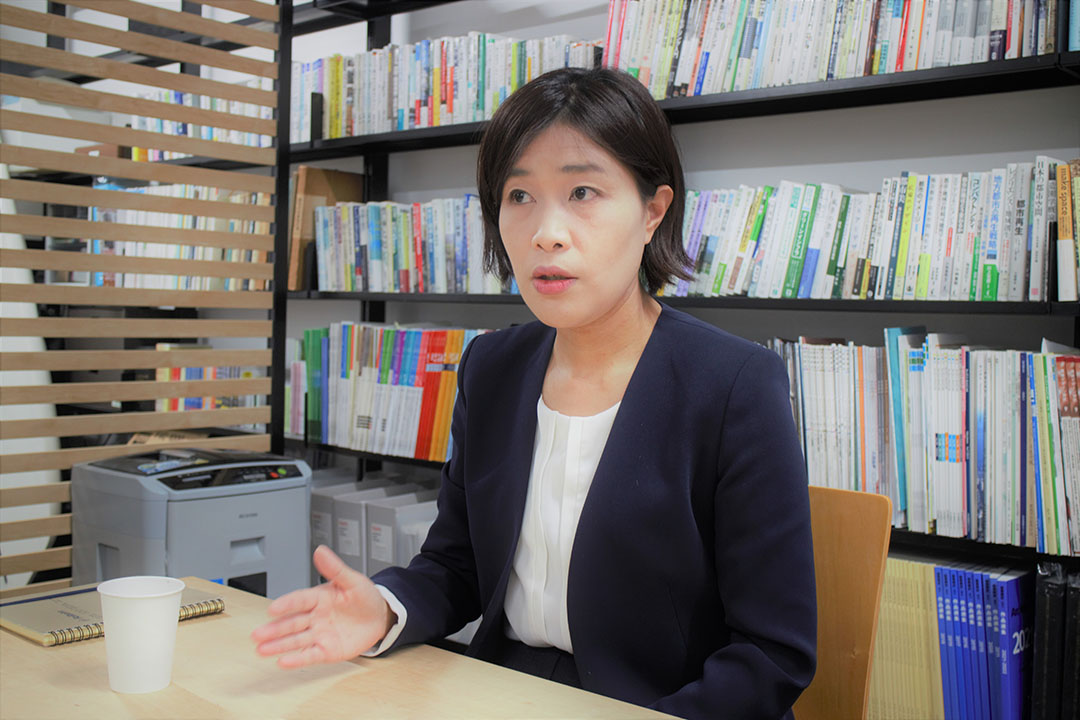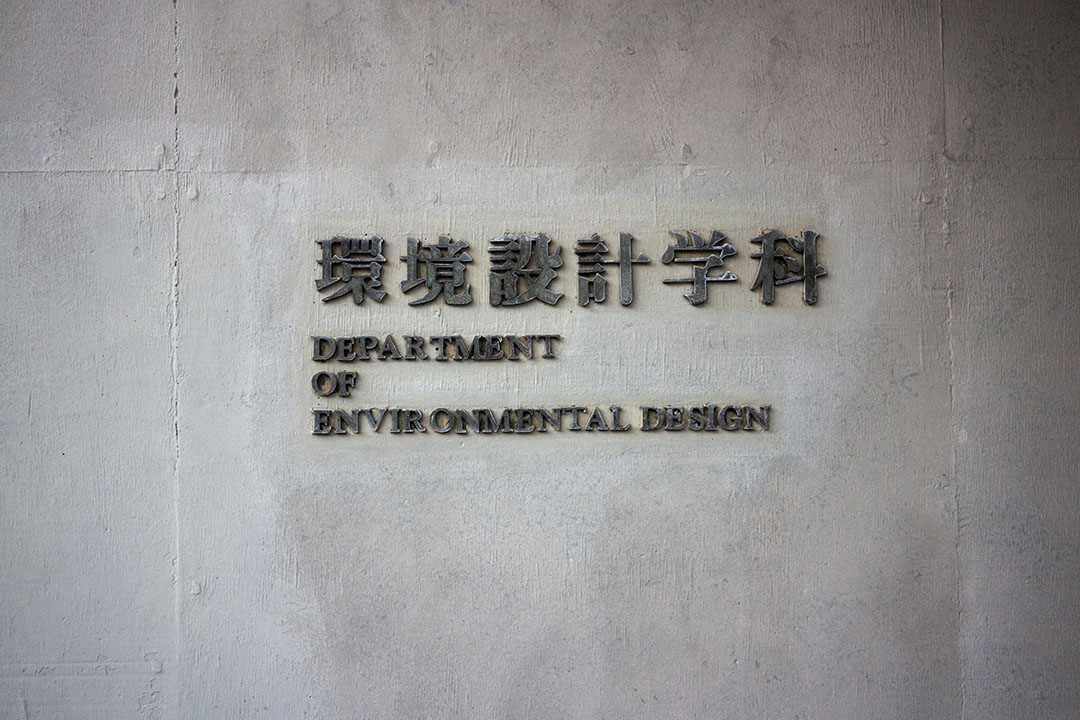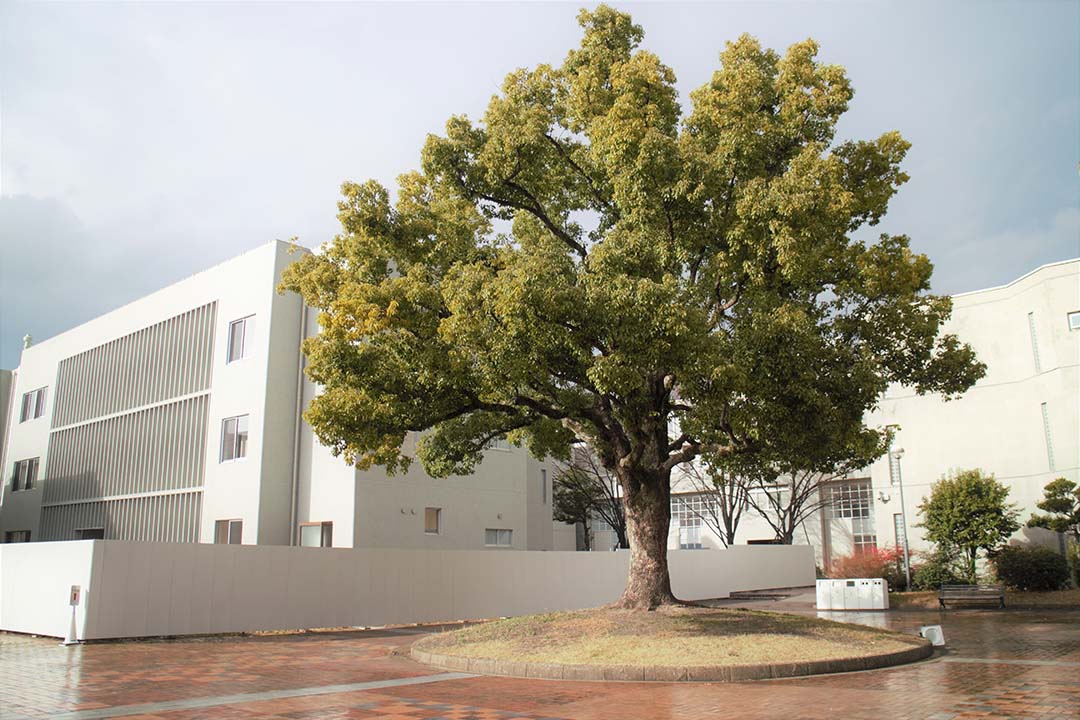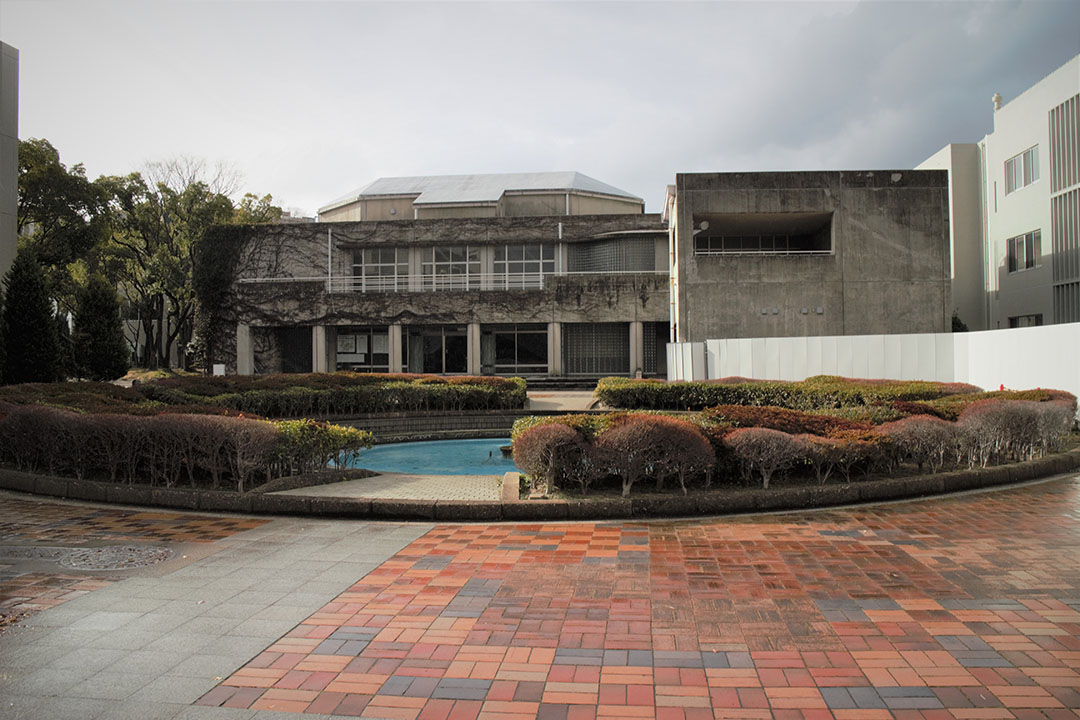
Green Infrastructure
Building Social Common Capital with the Natural Environment
What do you research?
I specialize in landscape ecology and urban planning.
What got you interested in this area of study?
Up until high school, I was interested in urban architecture and the outdoor environment. I wanted to learn how to create such environments. However, after I entered university, I became interested in a bigger scale than architecture, such as city and urban landscape planning that incorporate outdoor environments. From there, I have been fortunate to keep moving on to this path.
What are some of the issues you work on?
Well, there are many issues, but if you go back in time, the academic field of city planning was imported from the West during the early modern period in Japan. This field examines how to create a population environment that is functional, for example, by arranging land use, by separating commercial and industrial areas, and by installing housing to create a healthy and functional city for people.
As cities have become more planned, with those factors in mind, the question of how to relate to the natural environment has become very important, as the cities become surrounded by artificial asphalt and concrete. This creates, for example, the heat island phenomenon. Recently here in Kyushu too, heavy rain disasters often occur, caused by climate change. If the water cannot be absorbed by the earth, it becomes concentrated in a short amount of time, flowing rapidly into the river, causing more flooding.
As more and more problems occur, the question arises if we in fact are building weak and vulnerable cities. This is an issue that is being recognized as a problem. Under such circumstances, our laboratory hopes to introduce natural components into the city, called green infrastructure. Through re-introductions, could we build cities that are resilient and in which the people are living healthy every day? Will the space foster meaningful interactions?
Could you tell us a little about your current research projects?
The population is declining in industrialized nations, and Japan leads the way. Up until now, the focus was on how to protect nature from urban development, but in recent years as the population decreases especially in mountainous areas, fewer people are involved in agriculture, and land is being abandoned. So, the focus on protecting nature has reversed. Rather than protecting nature, nature is beginning to invade cities.

Wild boars suddenly appear, and there are reports of damage caused by animals. The issue now is how to manage the wildness of nature and how to balance places where people can live with nature, so that they are in harmony. This has become a central theme.
Landscape ecology is a step forward from conservation and evaluates the balance between nature and people, not by dichotomy, but by holistic evaluation. In the future, I would like to work more on the theory of city creation on an academic basis.
What is the satoyama study?
We are conducting research in Matsuzaka City in Mie Prefecture, in areas ranging from satoyama (natural areas adjacent to residential and places of human activity) to hilly and mountainous areas. We are studying how much human effort and involvement is required to manage the environment, and how much work time is required annually. These are also used as indicators to quantitatively elucidate the situation of satoyama. What kind of adverse effects will occur when management is lacking? We compare them to citizen participation style management, for example, comparing the distribution of damage from animals.
If the management of the water cycle is abandoned, soil erosion will progress, and the function of permeating water will also decline. I am also conducting research through simulations on how much tolerance of agricultural areas of satoyama declined in an area and am holding workshops to consider issues with the local people on how to proceed in the future.
Is satoyama a unique concept?
The fact that there is a moderate amount of human intervention means that biodiversity is high. Even from a global perspective, the hotspot of biodiversity is in Japan's islands. The OECM (Other effective area-based conservation measures) biodiversity strategy started in December of last year to consider what kind of strategy should be formulated across Japan. I hope to consider the role and presence of satoyama through such studies.
Could you tell us about your wind-thermal environment research?
Concerning wind environment research, my field has been the city of Tokyo. The army left a highly detailed handwritten survey map in the early Meiji era when the urban environment of Tokyo from the Edo period was still preserved. We took the data from the survey map left by the army and reproduced 60,000 buildings three-dimensionally on a computer one by one to compare it to the current cityscape.
We are conducting research on whether the thermal environment has changed, by making computer simulations under constant conditions and comparing the present Tokyo cityscape to that of the Edo period. We found that during the Edo period, the sea breeze penetrated the valley to the depths. The land was distributed according to the class system, such as the townspeople's area and samurai residence. We know that the air flowed into the domain of the mansions of the upper class on the plateau in the depths of the valley.
We are now learning that a network of waterways and other cool spots that stretch across lowland areas on sloping green spaces and outer areas were present. On the other hand, modern cities are cluttered with skyscrapers which have led to large-scale disturbances. The downdraft is represented by the wind from buildings. The sea breeze in the coastal area falls on the high-rise area and now is particularly affected by the large-scale redevelopment around Tokyo Station. The greenery of the Imperial Palace was less than it is today during the Edo period.
From the areas that we have studied, we have come to understand the impact of the thermal environment on the city in the green slopes that have been inherited from the Edo period, and the green spaces which are central. We are trying to find out how much field effect there will be if the waterway that has been reclaimed by the expressway is restored. We are working with NPOs that are trying to restore the local area with such plans.
The result of the study was made public, and people began to take action to revive it. It all began with the handwritten documents from the Meiji period, and it is only now that we understand for the first time what thermal and wind environments were like at that time.
How do you collect data for your studies?
We collect data in a variety of ways, but recently our laboratory has been working to elucidate how people flow through space in the city. We have installed AI cameras in the urban Tenjin district of Fukuoka City and in the Nakasu area. Personal information is immediately blocked, and age and gender are estimated. What kind of people are walking around the city at what time of day?
For example, we have four cameras installed at Tenjin Station, and we have been collecting such data since last March. Based on that information, we have been able to test how the flow of people will change by using parks, plazas and areas that have not been used before. We have just begun research on how the flow of people will change when we use spaces along the streets and parks, for example, during certain times of the day.
Along with the AI camera data, GPS can be used to gather location information from mobile phones. If it's from a specific provider, it’s not the complete picture but it's only of people who have that particular mobile phone service. Since we don’t obtain the mobile phone location information of all phones, the data obtained is limited. The information obtained from the AI camera has limitations too as the people flow through just within the frame of the cameras. The data is combined together to analyze traffic flow patterns and used to create ideas on how to improve the outdoor environment of the city. Right now, I'm putting the most effort into this research. I am conducing this joint research with professors at ISIT, (Institute of Systems, Information Technologies and Nanotechnologies), and the Graduate School and Faculty of Information Science and Electrical Engineering at Kyushu University.
Are collaborations important to this study?
Collecting and analyzing data has been done at various laboratories, and it's being conducted as an academic subject, not just an institutional analysis. For example, there are people who live in the city, people in various positions such as private business operators, people who live there, the people who manage buildings, and the economic logic, and each of those stakeholders and factors can be at odds.
It is not as though a good space will form on its own if left to their own devices. For example, it is good to take into account the quantitative evaluation by third parties to create a vision for a town and to realize the creation of that space. That becomes one of the more important tasks.
At that point, in the laboratory, we ask people from around Nakasu, Tenjin and near Ohashi Campus to gather and discuss things together such as how to navigate a particular roadside space. Through discussions of the place and exchanging ideas, plans may be tested as a demonstration experiment. We will try it in the short term to verify what kind of effect it actually brought, and if it goes well, we will proceed with the initiative to raise it up to the urban policy department of the city.
We also participate in the Nakagawa Future Conference with Nishitetsu, Panasonic and DNP, companies that are in the Nakagawa basin, organizations that are doing SUP (stand up paddle), and flower activities. With the participation of citizens and elementary school teachers, a new park is being created in this waterside space while taking into account the data. Each party has different interests and thoughts on how to proceed so there are conflicts, but with an objective eye I hope to consider how to best do it, so a good space can be made. I hope to do this as an action research.
Do you have advice for students?
Build knowledge about space, for example, what kind of city planning policies there are, about the institutional aspect of law, about economic aspects, about the business operators who own the land, and about smart systems, etc. If there are things that people would like to try, such as form a new startup company, find out what kind of cities are involved in it from an economic point of view, what kind of profit they are trying to get, and consider the issue from an environmental point of view.

On the other hand, in the future, how should urban spaces be dealt with in response to climate change issues? Since cities are an area where a wide range of interests intersect, it is better to take a wide range of educational areas. If so, how much to cover and expand? In my case, it was hard to draw the line, so I limit myself to urban living and the financial aspect.
Immediately after entering school, students are happy to draw pictures and indulge in activities of the process of nurturing their sensibilities without knowing that it is really important. Only later do you realize it comes in handy. I think it's good to see what is being done outside of the department and try to work on it or observe it. Areas of study such as law or economics. Maybe sociology? Since various fields are involved, I think it would be a good idea to dive into areas that interest you and listen in on various classes.
Is it important that cities work together with local businesses?
It has become a really big theme right now. It used to be that people shouldn't engage in profit-earning activities in public spaces and that the private sector should remain on their own land. They used to operate separately. However, PPP, the partnership between the public and private is recently gaining interest as there is a need for the originality and ingenuity of private enterprise in public places. Incorporating management know-how to create a space that will generate a certain amount of income will lead to the improvement of administrative services, which is also good for citizens.
There is a buzz around PPP from companies as well. As new business opportunities are created, companies may be asked to open cafes in such places in the park, and profits from the cafes are used to manage the surrounding lawns. The big issue is social inclusiveness. For example, there are people who have lost their homes, and people use parks as their last place of refuge. However, such people were kicked out of places with PPP in the city center.
When the private sector said that it would be a beautiful space that would generate profits, it became a very closed public space, and the gates to the park close at 10 o'clock. So, in some ways it has made the public park less inclusive. To hope for businesses to consider public interest, there is a limit to what we can expect from the private sector. Even on the public and administrative side, rather than entrusting everything to companies, there needs to be more discussions about the scope of responsibility prior to lending the space.
Could you tell us about your study with the research group in Italy?
The research in Italy is a study with researchers from the University of Catania, and is about accessibility to parks, farmlands, and green spaces. Accessibility in terms of an aging society and how easy it is for children to access such places, and so on.
We will give an evaluation on where and how much demand there is during the daytime on weekdays, and what kind of green space or park the citizens want there to be, for example, a place where you can take a break, or a plaza where people can talk to each other, or an outdoor space that suits pets. We conducted a matching research together. However, the concept of parks and green areas in Italy is different from the concept of parks in Japan.
In Japan, more so than in Italy, the usage for the city park and neighborhood park is determined in detail. If it is a neighborhood park, it is for people within a 150-meter radius. For parks that provide services and forest parks, the usage may be more open.
In Italy, the scale of the park is not pre-determined and is flexible. There are many more people there, who lost their jobs and have time. Many people gather at the park and talk to one another. The usage is very different. We can learn from each other in many ways, and in Japan, things could be more accommodating. What other things could be done? On the Italian side of the joint research, the research was to determine how to make the park more of a green space. The research is continuing not just on parks but also on the farmland and in the suburbs around the parks.
You have researched in Jakarta as well?
The research in Jakarta is led by a professor at Nagoya University, and is about the thermal environment in Indonesia. It is feared that climate change will directly affect the environment in Southeast Asia such as heat island, and some places will become uninhabitable. On a city level, what type of a green space will go with a master plan and how will it affect people's lifestyles? The joint research will determine if green spaces will alleviate that. The professor at Nagoya University is studying the effects of climate change to make future predictions.
Is it true that the declining population will significantly affect land use?
Japan is advanced in terms of the declining population, and when the population declines, land whose owners are unknown increases. In the past the price of land was high, even the price of rural mountainous land. Then, it was very clear who owned the land and how the land should be classified. However, with the drop in population, the price of land began to drop, and as owners die, the children inherit the land. However, if the offspring do not live close, the land they inherit simply costs inheritance tax and property tax. People want to give up their land but nobody wants to buy it or have the responsibility of maintenance. Therefore, lots of land have unknown owners. Should we consolidate such land and return it to nature, or change the area to organic farming, such as small-lot, variety vegetables that are highly profitable?

When you want to create customized zoning and you don't even know who owns the rights to the land in the first place, it creates problems. It is impossible to get a consensus on how to use the land and zoning becomes too subdivided. What is being said now is that the ownership and management which have always been thought as together, have become a big problem.aside class It is in the law, but perhaps ownership and management could be considered separately.
Ultimately, it is said that Japan has come to the point where it must decide, how to handle this question about the law. For example, can the city of Tokyo take over badly abandoned land and lend it out to people who want to rent land like a land bank? It has not been decided who will eventually take authority, and is among the most difficult of land issues.































